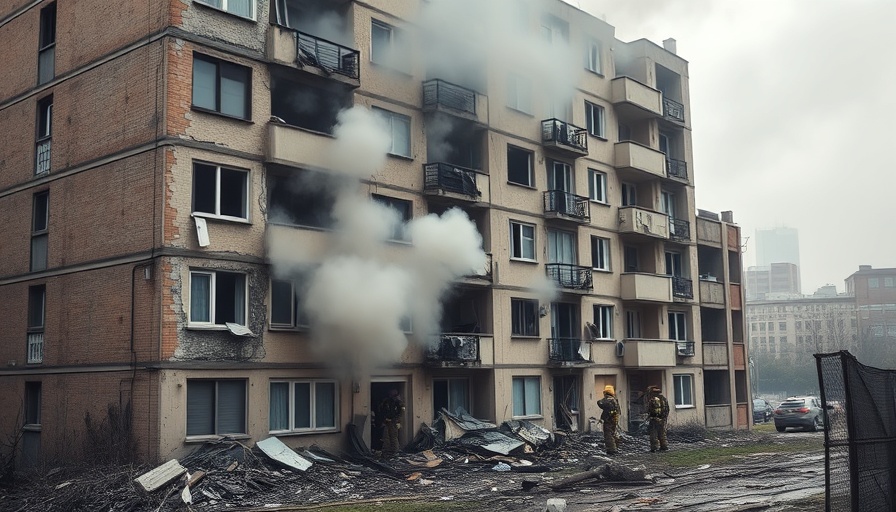
A New Wave of Violence: The Russian-Ukrainian Conflict Escalates
The conflict between Russia and Ukraine has seen a gruesome resurgence as Moscow retaliates for a surprise drone strike from Kyiv. On June 7, 2025, four lives were tragically claimed during Russian bombardments—a stark reminder of the ongoing instability in the region and the dire human cost of this war.
What Triggered This Latest Attack?
The catalyst for Russia's massive military response was reportedly a Ukrainian drone attack that targeted Russian territory, purportedly destroying 40 Russian planes. This incursion marks a significant escalation, showcasing Ukraine's military capability and willingness to strike back against its aggressor. Functioning as a retaliatory measure, Russia's counterstrikes not only respond to the immediate threats posed by Ukraine but also serve as a broader statement against Western support for Kyiv.
The Broader Implications for Global Security
This latest surge in hostilities demonstrates the fragile state of global security, where the ripple effects of a regional conflict can be felt worldwide. The war has prompted NATO to reassess its defense postures, as member countries fear a potential spillover of violence. Recent discussions within NATO centered around increasing defense spending, driven by the desire to deter further Russian aggression and ensure that European nations remain fortified against potential threats.
Turning Points: The Path to Negotiation
In light of these recent events, it is crucial to ponder the potential pathways to peace. With casualties mounting on both sides, international powers are being called upon to mediate discussions. Latvia's call to bring an end to the conflict reflects a growing urgency among nations to facilitate dialogue that prioritizes human life over military might. Without a concerted effort to broker peace, the likelihood of further escalation remains high.
Historical Context: The Long Shadow of Conflict
The roots of the Russia-Ukraine conflict stretch back several decades, with historical grievances and geopolitical maneuvers creating an environment ripe for violence. The annexation of Crimea by Russia in 2014 marked a pivotal moment, emboldening aggressive tactics that have persisted through subsequent years. This current escalation is merely the latest chapter in a historical narrative filled with regional and global implications.
Public Sentiment: Navigating Fear and Determination
For many Ukrainians, each act of aggression is met with a mixture of fear and resilience. Citizens show remarkable determination, often rallying around their national identity and resolve to oppose what they perceive as infringement on their sovereignty. Public sentiment is complex; many desire peace yet are prepared to continue fighting for their liberties when under threat. This dichotomy shapes everyday life and influences national decision-making.
Future Predictions: What Lies Ahead in Ukraine?
As we look ahead, predictions about the trajectory of this conflict remain uncertain. Experts suggest that unless there is a substantial shift in either military strategy or diplomatic efforts, the conflict is likely to persist, potentially leading to a longer-term instability in Eastern Europe. Observers warn that the implications of an unresolved conflict could lead to greater interference by outside powers, influencing not just regional, but global geopolitical landscapes.
The Russian-Ukrainian conflict underscores the complex interplay of military action, public sentiment, and the intricacies of international diplomacy. In a time marked by uncertainty, it is crucial that the international community remains vigilant and engaged in seeking pathways toward sustained peace.
Enhancing Awareness and Engagement
Understanding the nuances of this ongoing conflict provides valuable insights that extend beyond mere headlines. It encourages dialogue on how nations can collaboratively seek resolutions in a world increasingly defined by such conflicts.
 Add Row
Add Row  Add
Add 




Write A Comment